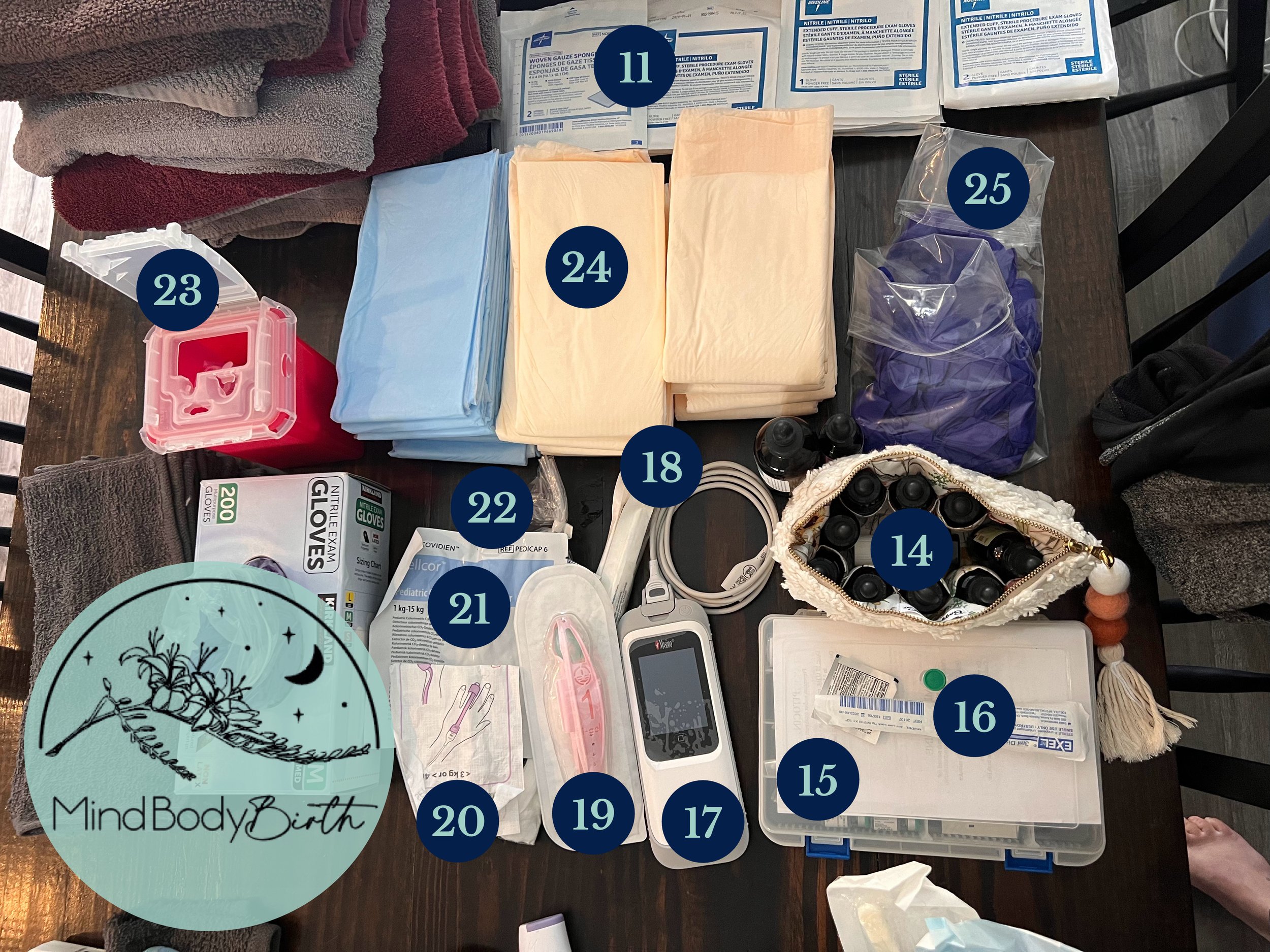WHAT DOES THE MIND BODY BIRTH TEAM BRING TO A HOME BIRTH?
This past year I had the pleasure of caring for and attending the birth of a client who also happens to be an L&D nurse at one of our local hospitals. While we frequently care for and attend fellow healthcare workers at home, this birth was additionally special in that our client invited both her sister and her close friend (who is also an L&D nurse) to attend her home birth. It was a beautiful, speedy birth in which I was grateful for my skilled birth assistant, Jessie, who arrived quickly and swiftly began setting up the birth space as I listened to baby's heart tones, supported my client, and prepared for what would clearly be an imminent birth. Baby made her debut about 15 minutes after our arrival, surrounded by so much love and support.
During one of our postpartum visits in the following weeks, I inquired how my client's L&D friend felt about the birth. Much to my delight, my client replied: "She said, 'It was like Children's [Hospital] rolled up in here! They set up everything, didn't need hardly any of it, and then packed it all up, leaving it like there hadn't even been a birth here when they left!!'" Coming from an L&D nurse attending her first home birth, this felt and still feels like high praise.
While midwifery care and out-of-hospital birth is more commonplace in some parts of the United States and worldwide, it has been slower in becoming mainstream in states such as Missouri, where legalization of home birth attended by a trained midwife has only occurred within recent decades. In these regions there is much work to be done in dispelling myths and misinformation surrounding midwives and home birth. Among the misconceptions, includes what a midwife brings with her to a home birth. While each midwife's set up will vary to some degree, the majority of midwives carry a set of tools/equipment similar to what is pictured here. This is an excellent question to ask when interviewing a midwife: "What do you bring to a birth?"
Resuscitation Station
1. Ambubag & Mask
2. Bulb syringe
3. Shoulder roll
4. Heating pad with cutting board inside (when needed, provides warm, firm surface that is portable, allowing for resuscitative measures with umbilical cord intact)
Birth Bowl
5. Bowl - holds all the birth instruments and tools and then serves to eventually hold the placenta
6. Ring Forceps
7. Episiotomy Scissors
8. Amnihook
9. Birth Kit Instruments - 2 hemostats, 1 pair cord scissors
10. Cord bander
11. Sterile gloves
12. 3cc syringe with needle
13. Sterile lubricant
General Birth Gear
14. Herbal Tinctures
15. Medication box (including hemorrhage meds, Lidocaine, antibiotics for GBS prophylaxis if desired, etc)
16. Unopened vial of Pitocin and associated supplies (often is returned to the med box following birth, but good to have at the ready in the rare event it is needed quickly)
17. Massimo Pulse oximeter
18. DeLee suction
19. igel laryngeal mask
20. Disposable pulse oximeter neonatal sensor
21. CO2 sensor
22. Neonatal tubing for free flow O2
23. Sharps container
24. Chux pads
25. Non-sterile gloves
Vitals Equipment
26. Doppler
27. Aloe gel for doppler
28. Stethoscope
29. Temporal thermometer
30. Blood Pressure cuff
31. Maternal pulse ox
Not pictured: IV fluids/supplies, Oxygen tank, maternal oxygen mask/tubing, NeoT, suturing instruments/supplies, catheterization supplies, Newborn Exam instruments/supplies, and most importantly the midwife's hands (the skill to use them when needed and sit on them when they aren't)




